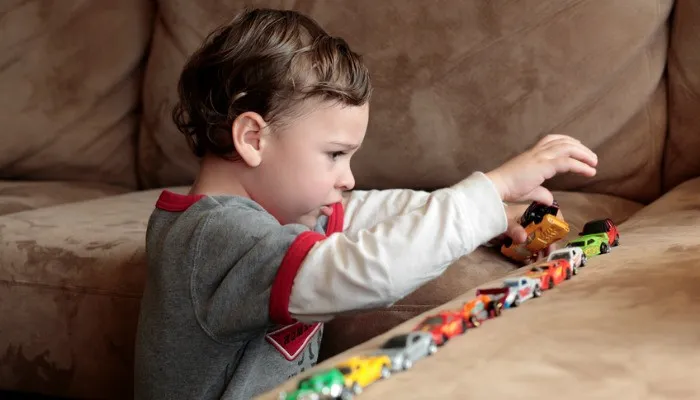

Help Autistic Children at School
There are several approaches and strategies that teachers and school assistants can use to help autistic children develop their linguistic, communicative, and social skills.
Many autistic children find it easier to understand the world around them if they can use visual aids. A visual timetable containing the times and simple drawings of the activities will show autistic students what they are going to do when. The timetable can be one hour or one week. He probably needs to be more accurate than usual in some places. For example, this can be used to help structure breaks.

Many schools use software packages that allow stories, explanations and instructions to be printed in parallel in words and symbols. Lists, items, and calendars are also visual aids that can help children understand a sequence of events and predict what will happen.
Comics
Some specially developed comics help autistic children to develop their social understanding because they visually represent the different levels of communication in a conversation. These comics use icons, line art, and colors. By visualizing the various elements, some abstract aspects of social communication (recognizing others' feelings and intentions) become more concrete and therefore easier for the child to understand. You can draw such comics yourself (they do not have to be works of art, simple sketches are usually enough). These comics can draw them to everyday social situations where the child has difficulty understanding.
Social stories
Autistic children, who can read, can learn how to deal with different social issues through so-called “social stories”. Social stories are usually written individually for the child by best essay writing service. They explain in words and pictures, step by step, what happens in a situation in which they feel insecure and shows them how to deal with this situation. For example, such a story can explain how to drive a bus or what to do if you hear a fire alarm.
Theater and role-playing games
Some autistic children respond well to theater and role-playing games in “social competence groups”. In doing so, they learn social skills such as greetings, alternating speaking and listening in a conversation.
Friends circle (“Circle of Friends”)
“Circle of Friends” is a way of promoting a support network for a child in a structured environment that can extend beyond the boundaries of the environment. This approach does not create instant friendships, but its goal is for the child to develop closer and better relationships with other children over time. Six to eight children are recruited to form as supporters the “Circle of Friends”. During a series of meetings, they help the child focus on expressing their feelings and reducing their fears. This can lead to improved social integration and more contact with peers.
Picture card communication (PECS)
PECS stands for Picture Communication Exchange System. It is a common approach to communicate with children with limited language. Teachers use images as symbols to teach the child the names of various objects. Gradually they teach the child to exchange the image of an object for the object it wishes to construct and to understand simple sentences with the images which object or activity they select.
Behavior

Some autistic children have behaviors that are difficult to deal with. It may not always be immediately apparent why a child behaves in a particular way, and it can be difficult to control the situation without understanding what is behind it and which strategies to use. For example, an autistic child with limited verbal communication may not be able to express feelings of anxiety, malaise or frustration in a different way than in an outbreak of unwanted behavior. Maybe they also learned that they usually get what they want through such an outbreak. The teacher must therefore analyze what was going on before the outbreak, that the child might have been upset, and show them another way to communicate.
Retreat
autistic children are overwhelmed with the usual hustle and bustle in school quickly and overwrought. They then react with a withdrawal from the situation, either physically (running away) or mentally (“shutting down”), or becoming aggressive because they no longer know how to help themselves.
Try to avoid such situations: Think about how to avoid over-stimulation beforehand. Is there a quiet place where the child can relax? Does it need supervision there or can it deal alone? Some children will need a sitting area in the hallway or a bench in the schoolyard, where they can do their jobs, others need a separate room and assistance with their tasks. Some people use music to relax, others can “turn off” when reading when they are engaged in a particular toy. Such breaks are necessary for many children to recharge their batteries and regain their concentration.
Watch for signs of over stimulation and send the child to their quiet location as soon as they notice or suspect that an overload will occur soon.
Help with unstructured time
Many autistic children have a problem with unstructured time, such as school breaks, especially with the big break. They do not tolerate the noise and unrest well and have difficulty with unstructured social interaction. Depending on the child, the solution may look different: use of specific premises may help or assist in interacting with classmates. A ping-pong game during the break is much more structured than the usual stomping and thus more accessible to autistic children.
For the same reason, trips and school trips can be difficult. Discuss with parents and children what needs to be done so that the child can enjoy it.
Support with motor difficulties
Some Asperger children have motor difficulties, which can be seen in school sports (gross motor skills) or handwriting (fine motor skills). If the motor difficulties are very strong, one can think about giving the child the school sport, if the motor skills for it outside of the school is promoted. As far as the handwriting is concerned, it must be checked whether the pen hold is correct and whether the child can cope better with another pen. Generally, thicker pins are easier to handle. If that does not help, you can allow the child to use a laptop at school and for homework. Just ignore these problems, because if the child has to focus excessively on a readable font, little attention is paid to the content.




